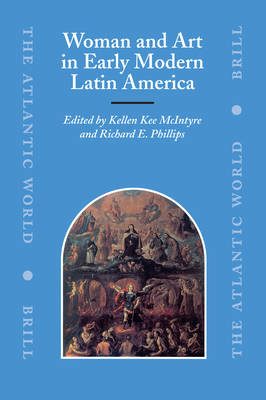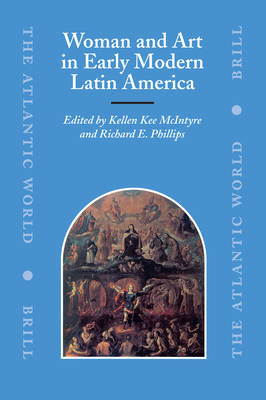
- Retrait gratuit dans votre magasin Club
- 7.000.000 titres dans notre catalogue
- Payer en toute sécurité
- Toujours un magasin près de chez vous
- Retrait gratuit dans votre magasin Club
- 7.000.0000 titres dans notre catalogue
- Payer en toute sécurité
- Toujours un magasin près de chez vous
Woman and Art in Early Modern Latin America
245,95 €
+ 491 points
Description
This anthology centers on the visual representation of woman in early modern Latin America, that is, the social and cultural construction and definition of female identity as evidenced by the art document. Artists in this period were collectively aware of a vocabulary of gender that could be tailored to deliver varying messages about the position of women in vice regal culture and society.
This volume is organized not in the predictable linear framework, by periods and centuries, but rather by the realization that throughout much of this period, Spanish authorities and others envisaged the Spanish colonies of the Americas in gendered terms. Proffered as the female body, the "New" (virginal by implication) World was at differing times adored, pursued, courted, seduced, defiled, exploited, reviled, and denounced by those (males) who encountered "her." This mentality is born out in the various forms of female representation that are discussed in this fully illustrated book.
Contributors include: C. Cody Barteet, María Elena Bernal-García, Magali M. Carrera, Carol E. Damian, Carolyn Dean, Catherine R. DiCesare, Lori Boornazian Diel, Kelly Donahue-Wallace, Ray Hernandez-Duran, Andrea Lepage, Kellen Kee McIntyre, Penny Morrill, Elizabeth Q. Perry, Richard E. Phillips, Michael J. Schreffler, and Christopher C. Wilson.
ERRATUM TO CHAPTER 7
Ray Hernández-Durán, "El Encuentro de Cortés y Moctezuma: The Betrothal of Two Worlds in Eighteenth-Century New Spain" (pp. 181-206).
On page 194, second paragraph, third sentence, should read:
"Marina's absence in the encounter painting, where she normally mediates contact between the men, emphasizes the phallogocentric aspect of the historic meeting."
The original phrasing, using the pivotal term, 'phallogocentric' (a reference to a gendered form of exchange or communication) was changed to 'phallus-centered, ' which not only alters a central idea in the argument, but actually has nothing to do with the image in question.
This volume is organized not in the predictable linear framework, by periods and centuries, but rather by the realization that throughout much of this period, Spanish authorities and others envisaged the Spanish colonies of the Americas in gendered terms. Proffered as the female body, the "New" (virginal by implication) World was at differing times adored, pursued, courted, seduced, defiled, exploited, reviled, and denounced by those (males) who encountered "her." This mentality is born out in the various forms of female representation that are discussed in this fully illustrated book.
Contributors include: C. Cody Barteet, María Elena Bernal-García, Magali M. Carrera, Carol E. Damian, Carolyn Dean, Catherine R. DiCesare, Lori Boornazian Diel, Kelly Donahue-Wallace, Ray Hernandez-Duran, Andrea Lepage, Kellen Kee McIntyre, Penny Morrill, Elizabeth Q. Perry, Richard E. Phillips, Michael J. Schreffler, and Christopher C. Wilson.
ERRATUM TO CHAPTER 7
Ray Hernández-Durán, "El Encuentro de Cortés y Moctezuma: The Betrothal of Two Worlds in Eighteenth-Century New Spain" (pp. 181-206).
On page 194, second paragraph, third sentence, should read:
"Marina's absence in the encounter painting, where she normally mediates contact between the men, emphasizes the phallogocentric aspect of the historic meeting."
The original phrasing, using the pivotal term, 'phallogocentric' (a reference to a gendered form of exchange or communication) was changed to 'phallus-centered, ' which not only alters a central idea in the argument, but actually has nothing to do with the image in question.
Spécifications
Parties prenantes
- Editeur:
Contenu
- Nombre de pages :
- 472
- Langue:
- Anglais
- Collection :
- Tome:
- n° 10
Caractéristiques
- EAN:
- 9789004153929
- Date de parution :
- 01-12-06
- Format:
- Livre relié
- Format numérique:
- Genaaid
- Dimensions :
- 167 mm x 245 mm
- Poids :
- 988 g

Les avis
Nous publions uniquement les avis qui respectent les conditions requises. Consultez nos conditions pour les avis.





